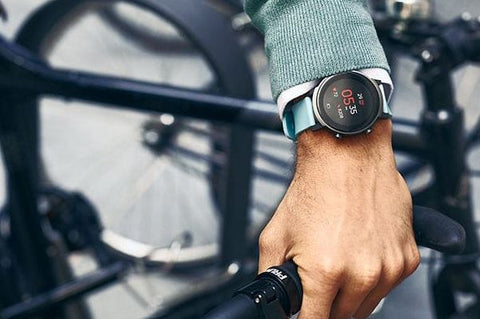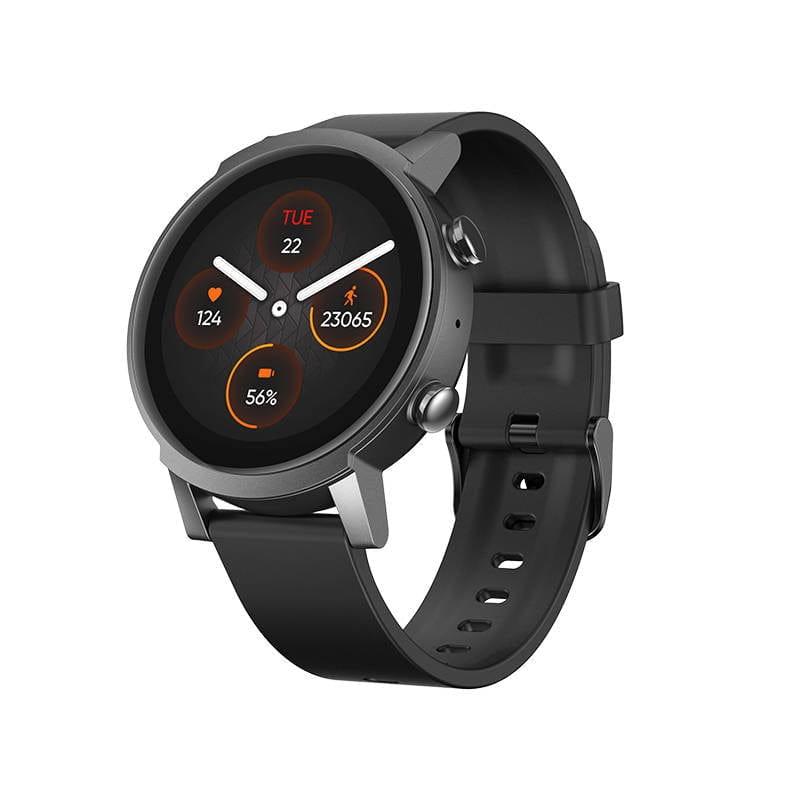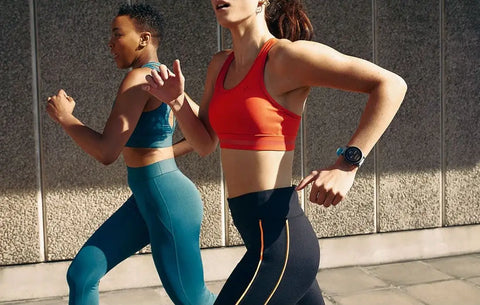
TicWatch E3 review
The TicWatch E3 is a smartwatch focused on health and well-being

The TicWatch E3 is a feature-rich smartwatch with a large display and good operating speed, although you may find that the design and LCD screen are not up to par. It's focused on general health and well-being with apps to measure stress, ambient sound, sleep, exercise and more. Recent news suggests that it will receive the next Wear OS update from Google, making it a good choice if you're looking for a reliable and affordable smartwatch.
Advantages- Large display
- Fast performance
- Many health tracking apps
Disadvantages
- It looks very simple
- The case feels cheap
- LCD screen, not OLED
TicWatch E3 in two minutes
The TicWatch E3 is the latest smartwatch from Mobvoi. It's a follow-up to the TicWatch E2, which we gave four out of five stars when we reviewed it in 2019, and a more affordable alternative to the TicWatch Pro 3.
This smartwatch doesn't have a lot of frills compared to its big brother the Pro 3, but what makes this smartwatch special is that it still has the same Qualcomm Snapdragon Wear 4100 chip as the Pro model. That means it's faster and smoother than its predecessors—not to mention many of Wear OS's competitors.
Mobvoi follows in the footsteps of other brands like Fitbit and Apple by introducing a device with all the basic workout tracking features you'd expect, as well as a bunch of health and wellness features in the form of Tic-branded apps. For example, there's TicOxygen for tracking your blood oxygen levels, TicBreath for guided breathing, TicPulse for heart rate, TicZen for stress, and more.
It has many features thanks to Wear OS, such as notifications, Google Assistant and Google Pay. It's all easy to use, thanks to the 1.3-inch display – too bad it's LCD and not OLED. In terms of design, the E3 is light and comfortable to carry. Its minimalist look goes with everything, but you might find it a bit boring.
The TicWatch E3 has a multifunctional, minimalist look, but it's not particularly interesting
A big question mark is whether the E3 will be one of the many Google Wear OS smartwatches that may not get the upcoming Wear OS 3.0 update – expected in late 2021 – without official confirmation. However, Wareable reports that the TicWatch Pro 3 and TicWatch E3 will receive the Wear OS 3.0 update. This is a relief for anyone who cares about E3 – without it, E3 could have gotten old very quickly.
TicWatch E3 design

The TicWatch E3 has a 1.3-inch 360 X 360 pixel display. It's a good size to get the most out of its features, but it's not perfect.
We didn't like the large border between the frame and the screen, which we consider a waste of valuable space. It's also a shame it's LCD and not OLED. That's not to say that OLED is always better, but it makes blacks look blacker and has better color contrast than LCD - which is why most of the best smartwatches choose OLED.
There's no automatic brightness sensor, which is annoying if you go from a dark room indoors to bright sunshine outdoors. Happily, it only takes a few taps to increase the brightness to maximum.
The case is quite large at 44mm in diameter and 12.6mm thick, which means it can feel bulky at first – especially on smaller wrists. However, we found that it didn't take long to get used to the chunky design that is similar to many smartwatches these days.
The E3 does stick out a bit on smaller wrists, but it didn't take long to feel light and unobtrusive
The watch has a polycarbonate frame with a plastic case underneath. Both materials feel a bit cheap compared to other metal body smartwatches. But that means it's super light at just 32g – if you care more about comfort than style, you'll have no problem.
There is no rotating crown here, but there are two buttons on the side. The top one turns on the display, opens the app menu, and returns you to the home screen. A long press activates Google Assistant, and a quick double press increases the brightness. The bottom shows the TicExercise app, but you can program it to do something else if fitness isn't a top priority.
Press the top button and you'll see the apps menu, where apps are laid out in a 2X2 grid rather than a long list – unusual for Wear OS, but we liked it.
Whether you think the TicWatch Whether E3 looks good or not is subjective. We were torn, we like the clean lines and minimal design, but we also find it boring compared to other devices.
There are ways around this with customizable watch faces – there are literally thousands to download from the Google Play Store – and a quick-release silicone rubber strap that lets you swap it out for any other 22mm strap. We tested the watch in Panther Black, but blue and yellow strap versions are coming soon.
Although it is light, it feels durable. Importantly, though, there's no Gorilla Glass, which means you might get some scratches on the screen after heavy use. It has an IP68 waterproof rating, making it suitable for showers and pools.
Daily use of the TicWatch E3

The TicWatch E3 is powered by the Qualcomm Snapdragon Wear 4100 chip with 1GB of RAM on board. Currently, this chip is in only one other smartwatch: the Mobvoi TicWatch Pro 3 – making the E3 an affordable alternative to Mobvoi's more expensive model. Most others have a Qualcomm Snapdragon Wear 3100 chip. However, the newer, better chip in the E3 makes it smoother and faster to use.
This means it's super responsive and responds quickly when swiping through menus. You also have everything you'd expect to see from a Google Wear OS smartwatch, like Google Pay, Google Assistant, maps and notifications. They all work well, load quickly and are easy to use.
The display is the perfect size for viewing notifications, calendar and all other apps. So while it might look a bit bulky on your wrist, it's perfect for reading text and actually using these features – a lot of similar devices let you see notifications, but doing anything with them is difficult. The E3 is the opposite, a large screen that, combined with the superbly performing Wear OS, made swiping through menus and using the watch an absolute joy.
What doesn't work so well, especially for notifications, is vibration. It feels flimsy, which might suit some people, but it didn't suit us because it resulted in some missed notifications.
The sleep tracking worked well and gave us nearly identical results for time spent asleep to the Whoop Strap 3.0 when we compared them. It also did a good job of identifying different stages of sleep – light, deep and REM – although the Whoop was more sensitive to disturbances, but that's to be expected as a higher-end device.
There are a bunch of apps at E3 that aim to improve your day by keeping an eye on you and the world around you. For example, TicZen monitors your heart rate to measure how stressed you are, and TicHear listens to the ambient sounds around you and notifies you if you're in an environment that's too loud and could affect your hearing.
All of these were interesting to open from time to time, but we didn't find ourselves using them regularly. The TicZen took more than 3 minutes to measure stress, during which time we started to think we didn't need it, and the TicHear told us that the sound of birds chirping and trees rustling in the local park were on dangerous levels, which seems wrong to say the least. These apps are probably more useful if you have a specific issue you want to track, but be warned that they may not be as accurate as you need them to be.
The TicBreathe app encourages you to take long, deep breaths, signaling when to inhale and exhale with visuals.
Battery-wise, the E3 can last just under two days with all-day heart rate monitoring and no sleep tracking. You might get a bit more out of it if you turn off the constant heart rate and SpO2 measurement. Most people can expect a day and a half with the always-on features, workout tracking and sleep tracking.
Charging is relatively fast. It took us an hour and a half to go from 0% to 100% with the little magnetic charger.
There's an Essential mode that saves battery when you drop below 5%. When in this mode, you are only shown the time, date, steps taken and heart rate so that the watch can continue to work, but without using up the power of additional functions. You can also turn this mode on at night if you don't need sleep tracking.
The interface feels smooth and responsive.
Fitness with TicWatch E3

The TicWatch E2 runs Google Wear OS, so you can use the Google Fit app on your phone and the Fit Goals, Fit Heart Rate and Fit Workout apps, but Mobvoi has its own suite of health and fitness apps. You must log into Mobvoi to activate each and consent to data collection.
TicExercise is Mobvoi's exercise tracker app with 20 workout modes including running, pool swimming, walking and yoga. The Freestyle option works well for counting sets and including pauses.
GPS is built in, meaning you don't need to take your phone with you if you're going for a run, bike or walk outside – the E3 can track your location on its own. While out for a walk, we found it connected to GPS within 30 seconds and all the location data collected was accurate.
There is also automatic exercise detection for running, walking and cycling. This worked well when we tested it with both running and brisk walking.
Also essential for tracking workouts is the built-in optical heart rate sensor, which continuously monitors heart rate during workouts, but can be turned on to take constant real-time readings with the TicPulse app. There is also a useful function for warning when the heart rate is out of the norm. You can set the limits in your settings and get a warning when it gets too high or low.
Heart rate data is graphed so you can see the trend over the course of the day.
There is also a blood oxygen sensor in the TicOxygen app. You can turn it on to measure once every hour during the day and night to determine your SpO2 levels. This is useful for noting various health problems and is essential for those with heart disease, asthma or other respiratory problems. However, we found that the E3 often had trouble reading these readings, even when we wore the watch very snugly.
Like heart rate, here you can also turn on an alert system that lets you know when your blood oxygen levels are out of whack.
Heart rate and blood oxygen sensors are located on the back of the E3, allowing them to monitor your wrist veins.
We put the Ticwatch E3 to the test during a number of different training sessions. The watch's start and stop feature is really easy to use – especially when you're tired and sweaty. You also get the key stats you need displayed on the screen and, again, as the screen is large and responsive, this was really handy.
When you finish a workout, you get a color-coded summary of the time you've spent in different heart rate zones, which we really liked.
It's really handy to see a quick overview of heart rate zones at the end of a workout – although the wording of the latter could be rethought.
Compared to the Whoop Strap 3.0, times and calorie burn figures were accurate, as was heart rate data. It didn't seem as sensitive at times, but the average heart rate and highs and lows matched then in the Mobvoi and Whoop apps.
This watch may be focused on general health more than fitness, but with GPS, automatic tracking, and pretty reliable heart rate monitoring, it's a solid sports option for the price.
Companion App
The Mobvoi app connected to the E3 quickly and easily after the initial setup and connection.
There's nothing wrong with the Mobvoi app - all the information you need is here - it just doesn't look as slick as its competitors.
You will find everything you need in the Mobvoi app. Your activity is presented at the top in a circular visualization that includes active hours, exercises and step count. It's a good and easy way to get a quick overview of your activity for the day.
Below that you'll find the various data the E3 collects, there's also a section for exercise, sleep, heart rate, SpO2, stress and noise. You can view your stats for the day or zoom out and see trends over the week or month.
The app's design is as unassuming as E3 itself. Everything you need is there, but the super simple design feels basic compared to the competition.
Since the E3 runs on Wear OS, you can also use Google apps like Wear OS and Google Fit if you prefer. However, they're also pretty simplistic and don't pull in all the stress, noise, or SpO2 data that make the E3 so comprehensive in terms of health, so we mostly stuck with the Mobvoi app during testing.

Buy TicWatch E3 if
You are mostly interested in features.
The TicWatch E3 smartwatch works super well and has a large display. That means if you like reading messages, setting alarms, using Google Pay, and other smartwatch features, this is a solid option for you.
You have a limited budget
The E3 isn't the most affordable smartwatch around, but it's a better option than its competitors, like Fossil's latest smartwatch, the Fitbit Sense, or the pricier TicWatch Pro 3. It's clearly a budget watch that's limited in terms of of design and screen choices, but you still get a lot for your money, and it ranks highly compared to other Wear OS devices.
You want a complete health and fitness device
With all-day heart rate monitoring, stress measurement, relaxation features, blood oxygen sensor and more, the E3 is a smartwatch that is focused on health, fitness and well-being, not just training and sports.
Don't buy the TicWatch E3 if
You want something more stylish.
We really liked the look of the TicWatch E3, but the simple design and plastic body aren't for everyone. You might find it boring or a little cheap compared to other smartwatches, so if you know you'll value style over the E3's lightweight design, look elsewhere.
You want to track workouts and nothing else.
If you have a specific sport in mind or focus primarily on fitness goals, look for a watch from a brand like Garmin that goes deeper with its smart fitness features and stats. Of course, many of Garmin's best smartwatches also have plenty of health features, but they're also the most effective when it comes to fitness and would suit you better than the E3.
You want a high-end screen
The E3 screen isn't bad, but you can find better. It's LCD, not OLED, the bezel is annoying, and there's no auto-brightness. For some people this won't be a problem, but compared to the Apple Watch Series 6 or the Fitbit Sense - both with OLED screens and automatic brightness - you'll be disappointed.
